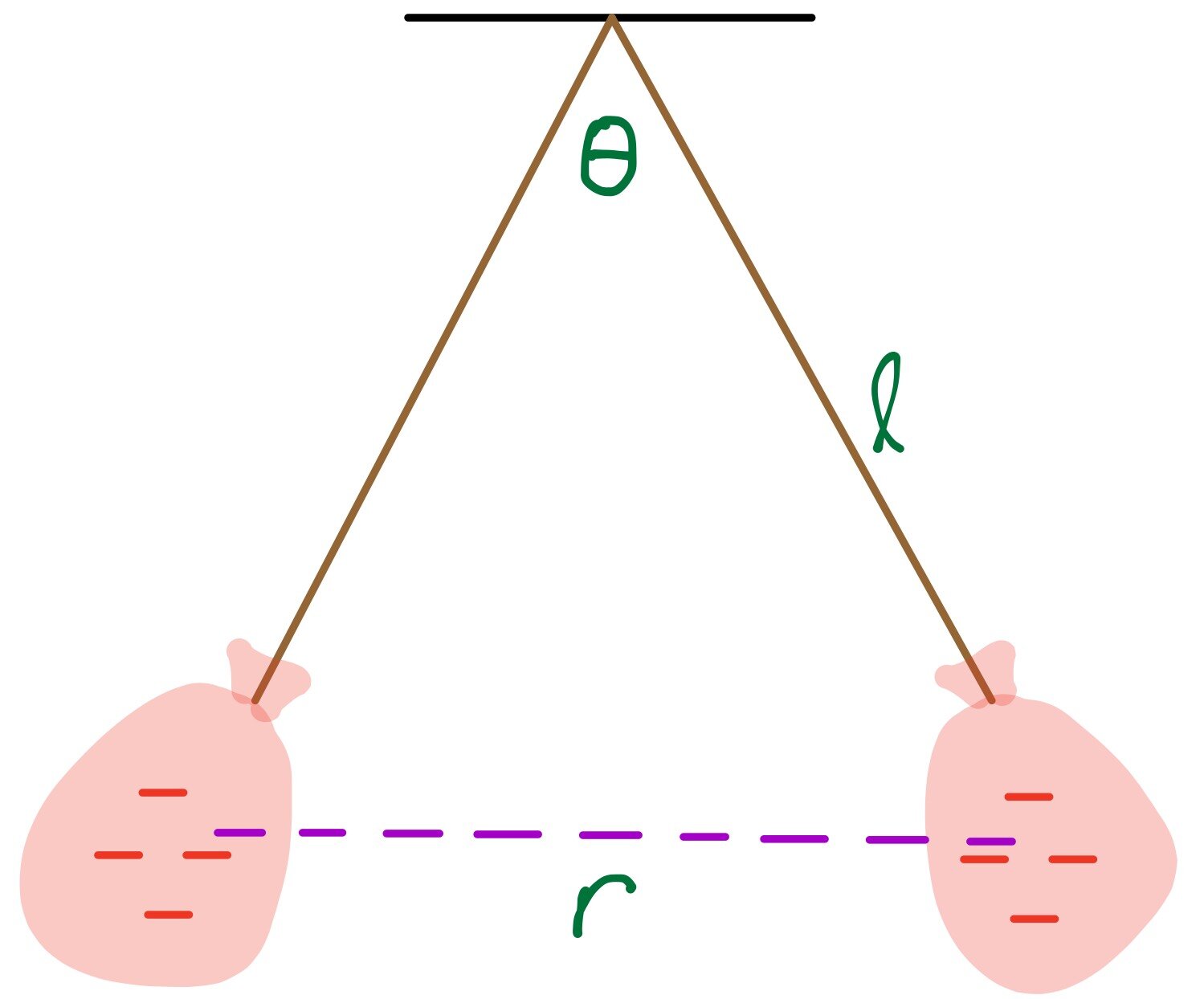Teaching and Learning Physics: Being a Long Term Sub
Model I drew for a lab on counting electrons using Coulomb’s Law.
Shortly into the second semester of the 2017-2018 school year, one of my colleagues tragically passed away unexpectedly. In order to provide as much stability for students as possible, most of her classes were taken over by fellow science teachers, except the Advanced Physics and Engineering class. This class they gave to the new computer science teacher, who was also my assistant coach on the Robotics team. In conversation, she expressed her concerns around the advanced mathematics within the course, so I offered to step in and teach with her. As a newly developed course, there were no past unit plans nor many documents outlining the intended direction of the course. Within shortly order, I became the primary instructor for the course, using the textbook and online homework portal to teach myself the mathematics around electricity and circuits. Below, you will find examples of the materials my colleague and I created for this class.
We generally followed the instructional pattern the students had used for the prior semester, diverging most when it came to checking understanding and the number of hands-on experiments and projects we integrated into the course. The students were used to reading the textbook and taking personal notes, followed by more notes in class. This I shifted to be textbook notes followed by guided in-class review that touched on key concepts and allowed students to practice applying the principles together, see the ‘Chapter 23 In Class Practice Review’ and the hand out ‘Practice Problems 23 sec 2-4’ for an example of this process. One of the smaller, in-class labs we completed as partners in class is linked below. This lab was a fun way to see Coulomb’s Law in action with balloons.
We also led the students project based assessments: such as creating Rube Goldberg machines to apply their past knowledge and apply new skills around electricity and engineering drawing. Working throughout March and into April, teams of students used recycled, salvaged, and 3D printed parts to create multi-stage machines that used a series of demonstrate their understanding of topics such as potential and kinetic energy, chemical reactions, simple machines, momentum, and electrical circuits. You will find the initial assignment sheet below. This project became an excellent ongoing project, allowing students to balance their efforts between the traditional physics coursework they were used to and hands-on, and fun, applications of those principles.
Their final exam came in two parts—a traditional test and a creative project. The test was a traditional, formal exam on the principles of electricity and circuits, see included study materials—’circuit diagram symbols’ and ‘electricity and circuits unit constants, formulas, and units’. The project was to work in groups to create an interactive, and fun, small class on electricity and circuits for third graders. We then took these lessons to a nearby elementary school, and shared the results with the students there. To say I was blown away but the creativity of the students would be an understatement. They created personalized workbooks with fun activities on each page, origami circuits with copper tape, watch batteries, and LEDs, and sundry more incredible and creative ways to share their knowledge with the young students. I was left in no doubt that they all thorough understood the principles I had been teaching them in class.
